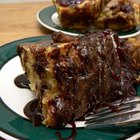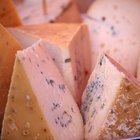
The Elizabethan period was the golden age for art and literature, during her rein from 1558 to 1603. Before the main meal, such tidbits as eel, mutton balls and spicy lamb were served --- not only as a starter, but also to set the mood for before-dinner conversation. Elizabeth I was particularly forward-thinking about appetizers, but serving a before-dinner teaser did not become widely popular, accepted and expected until the 1860s.
Starter Appetizers
Queen Elizabeth I enjoyed and served appetizers, but she was not the first monarch to do so. In 300 B.C., Athenian aristocracy served sea urchins and cockles before meals to whet their guests’ appetites. The word “appetizer” was first coined in 1862, derived from the word “appetize.”
Appetizers at Table
Appetizers were not available to all social classes in Elizabethan England; economic and social class status determined the meal menu. Before appetizers were served, the table was dressed for stunning visual impact; a great variety of color was used to enhance meal presentation. Peacock feathers decorated food on the table, especially imported food. Chicken and meat appetizers were reserved for the nobility and wealthy classes. Notwithstanding the flourishing table décor, forks were still evolving; utensils consisted of knives only, and spoons were rarely used.
Diverse Appetizer Choices
Due to the increase in imported foods, appetizers in Elizabethan England became diverse and exotic. Some favorites were veal soup, rack of veal, spicy mutton ball soup, and chicken liver pate. Other appetizers included eel, liver and currant pate with a taste of nutmeg, eel and onion pie, currants and onion pie, herring and fruit pie, and pickled Herring baked in a double crust with fruits.
Appetizer Preparation
Sauces were a vital part of serving appetizers. Either used for dipping or covering, sauces included some of the new food items brought to England by explorers, such as potatoes, tomatoes (known as “love apples” then) and turkey. Some appetizers included the exotic tastes of cayenne, red peppers, chili and paprika. These new additions to the Elizabethan spice rack did not eliminate the traditional spices used in appetizer preparation and general cooking like avens, dittany, clary, borage, hyssop, galingale and laver.
Related Articles

Victorian Banquet Menus

Facts About Italian Cuisine
50s & 60s Party Appetizers

What Is a Tiki Party?

About Colonial Desserts

Traditional English Diet

Traditional French Easter Food

Staple Foods in Greek Culture

The History of Bread Pudding

Afghan Spices

Bohemian Cooking

Desserts From the '20s

List of Latin American Foods

A List of Foods From the Medieval Times

Foods Served at a Spanish Wedding

Hopi Indian Foods

Outdoor Country Wedding Food Ideas

How to Blend American & Nigerian ...

Who Wears Red Fez Hats?

List of Cuban Foods
References
Resources
Writer Bio
Timothy Mucciante has worked as a lawyer and business consultant, and has been writing professionally since 1981. His writing has appeared in the "Michigan Bar Journal" and many corporate publications. Mucciante holds both a Bachelor of Arts in political science from Michigan State University and a Juris Doctor from Michigan State University/Detroit College of Law.
Photo Credits
Brand X Pictures/Brand X Pictures/Getty Images